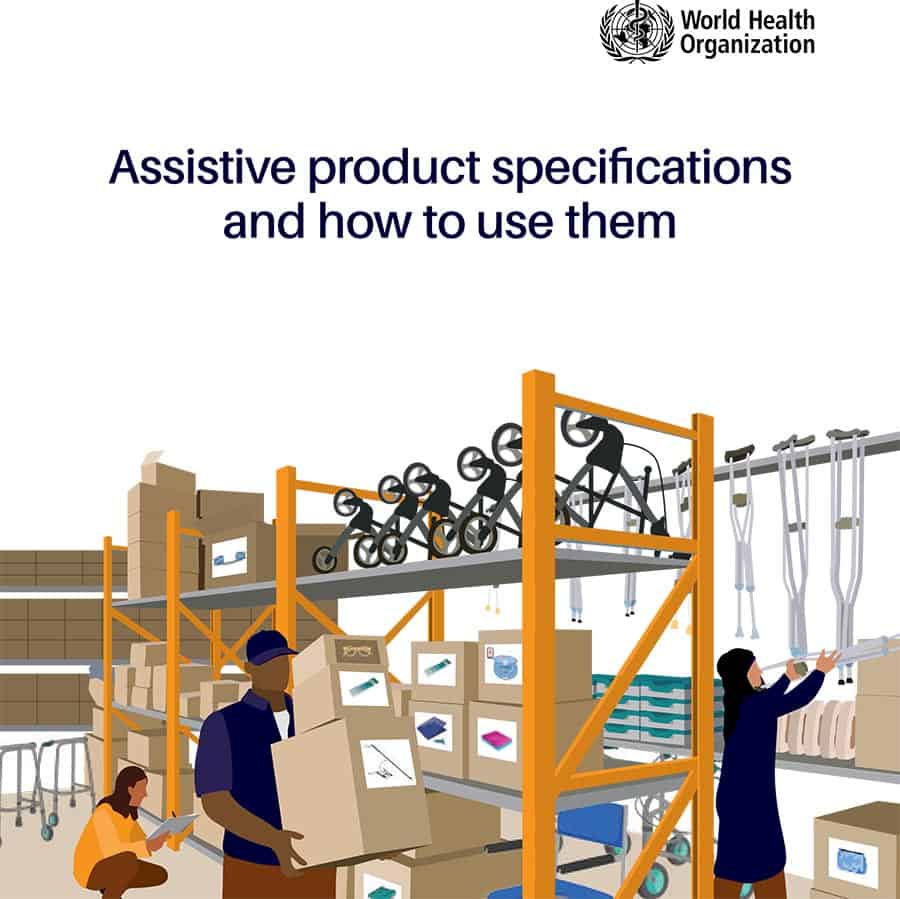WHO publishes important global guide on assistive tech specifications and how to use devices

The World Health Organization (WHO) has published a landmark assistive technology guide to expand access to quality products and drive disability innovation on a global scale.
Entitled ‘Assistive product specifications and how to use them’, the guide is aimed primarily at procurement teams. It includes specifications for 26 prioritised assistive products and describes the minimum quality requirements for manufacturing.
According to the guide, assistive products are defined as: “… Any external products, including devices, equipment, instruments and software, especially produced or generally available, the primary purpose of which is to maintain or improve an individual’s functioning and independence and thereby promote their well-being. Assistive products are also used to prevent impairments and secondary health conditions.”
The 26 prioritised products listed in this guide were identified from WHO’s previous work with the British Assistive Technology Association (BATA) on drawing up a priority assistive products list (APL) in the UK.
The APL asked relevant stakeholders about priority assistive technology products to help the UK plan, procure and provide essential assistive technology products to the elderly and disabled people who need it most. This APL aimed to help the UK save money in the long-term by preventing illness and disability through the use of assistive technology devices.
Now, drawing on findings from the APL, WHO’s new guide covers information about mobility, hearing, vision, communication, cognition and self-care. The products range from rollators, hearing aids and portable ramps through to wheelchair seat cushions, walking frames and shower chairs.
Funded by UK Aid under Global Disability Innovation Hub’s AT2030 programme, the assistive technology guide supports a focus on pioneering products, new service models, and global capacity to drive disability innovation for a fairer world.
The main aim of the guide is to ensure countries get supply of good quality and affordable assistive products for all who need them. Each product listed describes the functional and performance requirements that can be used as a model to guide manufacturing and procurement.
WHO says its guide is the first global document for quality-assured assistive products and will be updated on a regular basis.
Importantly, the guide notes that determining the assistive product and service requirements at the planning stage of a procurement process is essential to its success. These requirements will be expressed in a procurement specification that forms the basis of a tender announcement, which suppliers use to formulate bids and the procurement team uses to evaluate bids received.
WHO outlines that it is crucial for adequate planning and resourcing, and for selecting the right assistive products, suppliers and follow-up services.
Later this year, WHO and UNICEF will issue a joint tender for wheelchair and hearing aids and will ensure the products reach those who need them.
The two organisations have already identified, and are working with, assistive technology manufacturers to ensure the specifications are followed and that production and supply can be cost-effective for both bulk buyers and individuals. Both organisations will also support countries with training to adapt their national standards to improve access to quality, life-changing health products.

